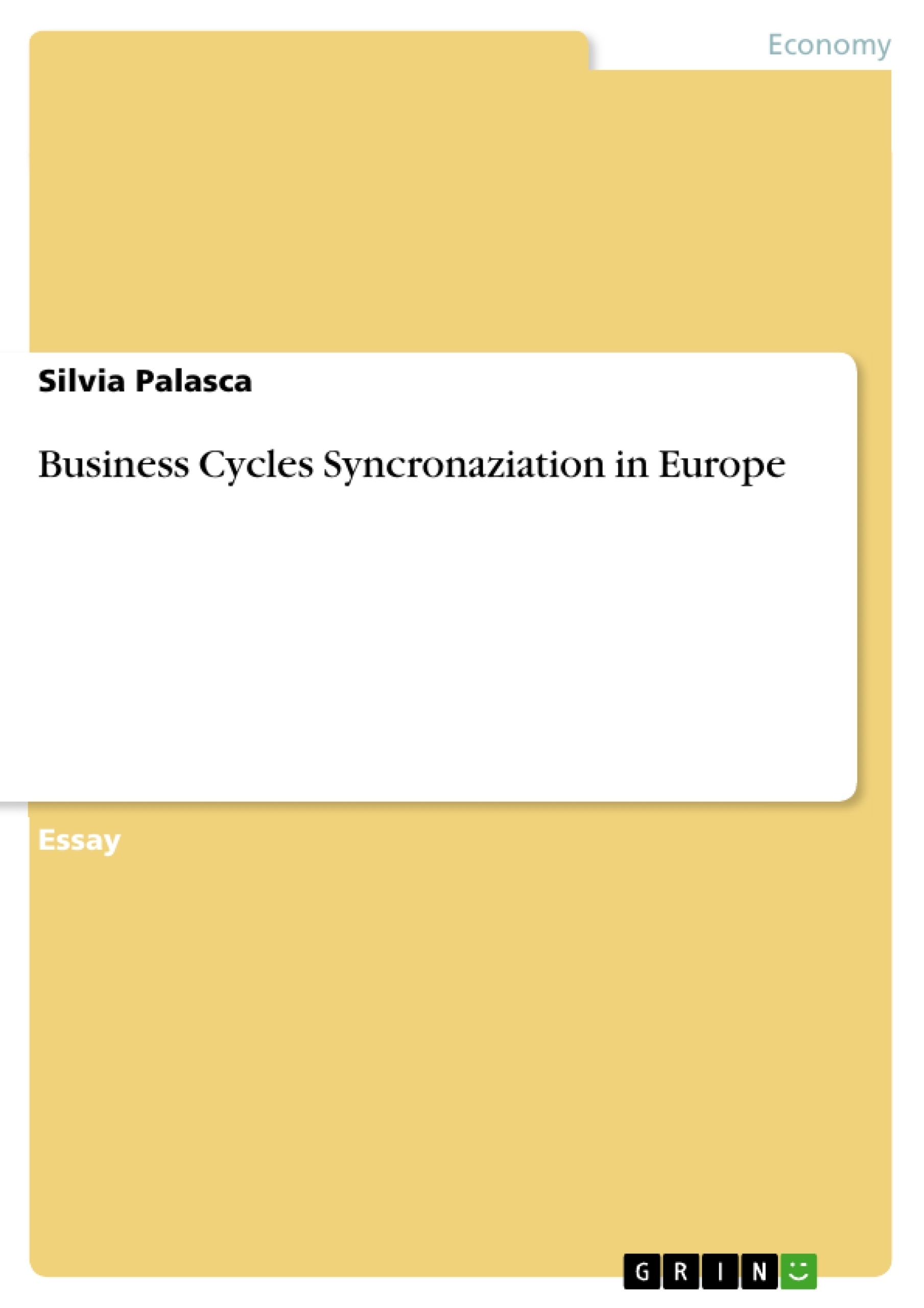The European Union sets the premises for the appearance of a new phenomenon in the global economic setting: the synchronization of the national business cycles.
The aim of this article is to statistically prove the existence of a Euro are business cycle through the study of a classic indicator- the annual change of the GDP and also through the use of foreign trade indicators-the annual changes in exports in imports. Also, it is important, at the end, to choose the best of these indicators or a combination thereof to use as a benchmark for further studies.
The empiric study is useful to classify the European countries in clusters according to synchronization, a first step in adopting common policies.
Inhaltsverzeichnis (Table of Contents)
- INTRODUCTION
- Preliminaries
- Previous literature
- DATA AND METHOD
- RESULTS
- Synchronization by Gross Domestic Product
- Synchronization by international trade
- Measure of synchronization
- CONCLUSIONS
Zielsetzung und Themenschwerpunkte (Objectives and Key Themes)
This article aims to statistically prove the existence of a Euro area business cycle. The author analyzes the annual change in GDP, exports, and imports to investigate the synchronization of business cycles in European countries.- Business cycle synchronization in the Euro area
- Impact of trade on business cycle synchronization
- Clustering of countries based on synchronization levels
- Comparison of different business cycle indicators
- Implications of synchronization for economic integration
Zusammenfassung der Kapitel (Chapter Summaries)
- Introduction: This chapter provides an overview of business cycles and their importance in modern economies. It highlights the concept of business cycle synchronization in the context of the European Union and the objectives of the article. It also reviews previous literature on the topic.
- Data and Method: This chapter describes the data and methodology used in the study. It details the data sources, variables, and the Hodrick-Prescott filter used for analysis. The chapter also explains the use of Pearson correlation coefficients to measure business cycle synchronization.
- Results: This chapter presents the findings of the analysis. It examines the correlation coefficients between the business cycles of European countries, using GDP, exports, and imports as indicators. The chapter discusses the synchronization patterns based on these indicators and analyzes the role of various factors, such as currency, technology, and political integration.
Schlüsselwörter (Keywords)
This article focuses on the concept of business cycle synchronization in the Euro area. It uses GDP, exports, and imports as indicators to measure the degree of synchronization among European countries. The main focus is on analyzing the impact of trade and economic integration on the synchronicity of business cycles.- Citation du texte
- Silvia Palasca (Auteur), 2013, Business Cycles Syncronaziation in Europe, Munich, GRIN Verlag, https://www.grin.com/document/215747



